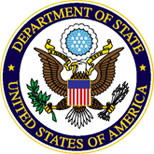Wastewater monitoring updates to add new capabilities beyond COVID-19 and Twin CitiesMinnesota is updating and centralizing its COVID-19 wastewater reporting system. The updates will combine testing done in the metro area with a statewide monitoring system capable of detecting a variety of viruses in the general population, including COVID-19. Wastewater surveillance of COVID-19 has become an important tool for monitoring trends with the virus, especially as the use of at-home tests has increased. These at-home test results are not generally reported to public health departments. Beginning Sept. 1, Metropolitan Council, working as partners with the University of Minnesota Genomics Center (UMGC), will no longer be testing samples for SARS-CoV-2 (the virus that causes COVID-19). Testing will shift to the University of Minnesota Medical School and the Minnesota Department of Health (MDH) Public Health Laboratory. For the last few years, the Metropolitan Council has worked with the UMGC to analyze and report weekly on the prevalence of the SARS-CoV-2 in wastewater entering the Metro Plant in Saint Paul. The University of Minnesota has also been monitoring 37 wastewater treatment plants across the state, including the Metro, with a public dashboard that is updated weekly: Wastewater SARS-CoV-2 Surveillance Study. That dashboard will continue to be updated. This new approach is designed to be more sustainable and integrates early viral detection systems for Greater Minnesota. The MDH Public Health Laboratory will also implement a new assay to monitor for SARS-CoV-2 variants from wastewater. The changes fit with the Center for Disease Control's national wastewater monitoring approach. "As we address the long-term management of COVID-19 in our communities, we are updating how wastewater surveillance is done in the state," said Minnesota Commissioner of Health Dr. Brooke Cunningham. "The new approach will provide better statewide data for COVID-19 as well as future monitoring for other viruses." "Going forward, the synergy between MDH and UMN will be a force multiplying effort that serves as an early warning system for pathogens that impact public health," said Mark Osborn, study lead and an assistant professor at the U of M Medical School. "The work of analyzing and reporting on the prevalence of the SARS CoV-2 virus in the region's wastewater has been important and rewarding," said the Council's Environmental Services Division Director Leisa Thompson. "We've learned so much about how wastewater surveillance can and will contribute to public health. The Council will continue to participate in this vital partnership, by continuing to provide samples from an abundance of wastewater that we collect and treat." The University is working with the MDH Public Health Laboratory to verify methods that will allow them to eventually add RSV, influenza A and influenza B to wastewater monitoring. State health experts are hopeful the expansion to monitoring other viruses will provide useful signals that combined with other disease surveillance can help officials respond more effectively to disease threats. For more details about wastewater monitoring system, visit the University of Minnesota's Wastewater SARS-CoV-2 Surveillance Study page. -MDH- Media inquiries: |
Friday, September 1, 2023
News Release: Wastewater monitoring updates to add new capabilities beyond COVID-19 and Twin Cities
Subscribe to:
Post Comments (Atom)
Page List
Blog Archive
- November 2024 (1206)
- October 2024 (2862)
- September 2024 (2667)
- August 2024 (3156)
- July 2024 (3241)
- June 2024 (3107)
- May 2024 (3196)
- April 2024 (3104)
- March 2024 (3192)
- February 2024 (3006)
- January 2024 (3261)
- December 2023 (3176)
- November 2023 (3188)
- October 2023 (3191)
- September 2023 (2961)
- August 2023 (3120)
- July 2023 (3024)
- June 2023 (3042)
- May 2023 (3205)
- April 2023 (3030)
- March 2023 (2986)
- February 2023 (2584)
- January 2023 (2694)
- December 2022 (2745)
- November 2022 (2899)
- October 2022 (2916)
- September 2022 (2970)
- August 2022 (2981)
- July 2022 (2814)
- June 2022 (2759)
- May 2022 (2768)
- April 2022 (2692)
- March 2022 (2851)
- February 2022 (2550)
- January 2022 (2715)
- December 2021 (2641)
- November 2021 (2745)
- October 2021 (2836)
- September 2021 (2847)
- August 2021 (2756)
- July 2021 (2572)
- June 2021 (2738)
- May 2021 (2579)
- April 2021 (2698)
- March 2021 (2789)
- February 2021 (2532)
- January 2021 (2617)
- December 2020 (2664)
- November 2020 (2637)
- October 2020 (2824)
- September 2020 (2745)
- August 2020 (2704)
- July 2020 (2749)
- June 2020 (2669)
- May 2020 (2199)
- April 2020 (4060)
- March 2020 (5898)
- February 2020 (6963)
- January 2020 (7455)
- December 2019 (10)
Search This Blog
Promover la rendición de cuentas de la Policía Nacional de Nicaragua
Traducción cortesía del Departamento de Estado de los Estados Unidos Promove...

-
View Images Library Photos and Pictures. Как сделать усилитель сигнала сотовой связи своими руками Усилитель 3G сигнала своими руками Антен...
-
Download Images Library Photos and Pictures. 3 Graduation Invitation Letter Sample Invitation Letter Sample Invitation Letter To Friend For...



No comments:
Post a Comment